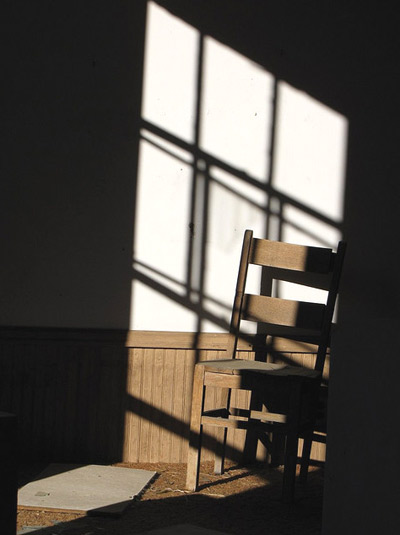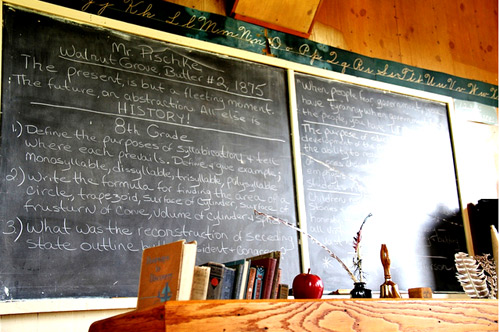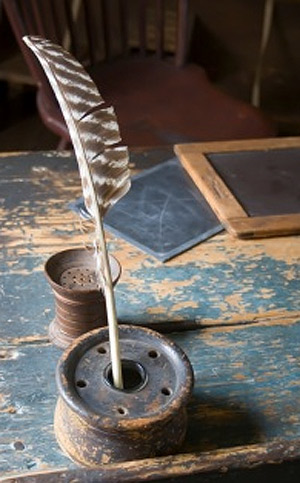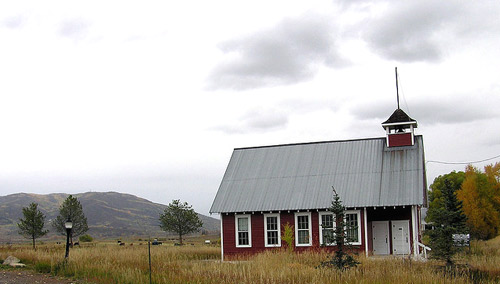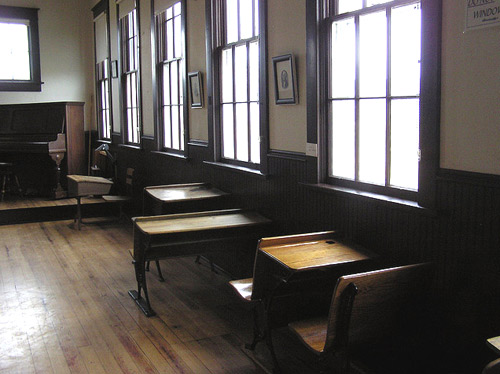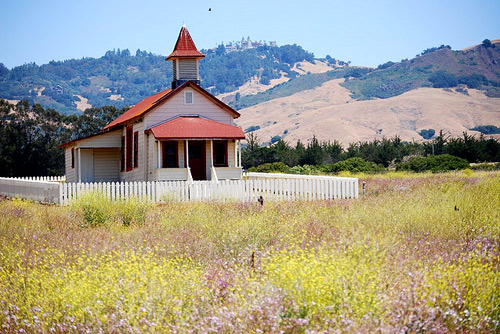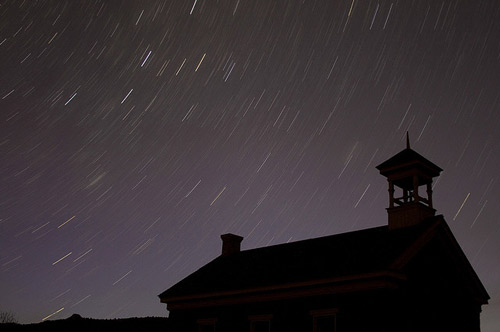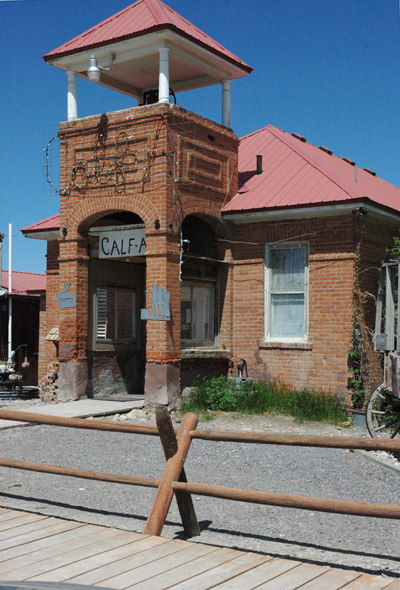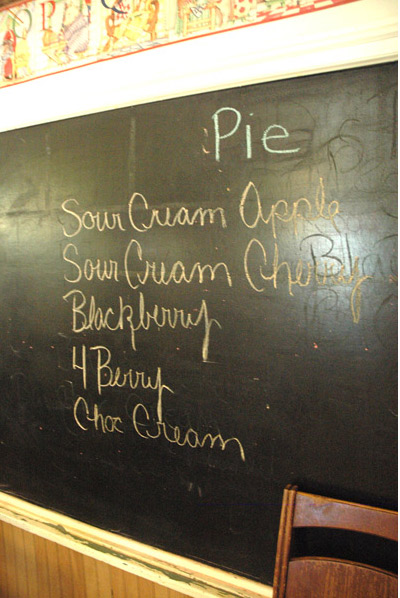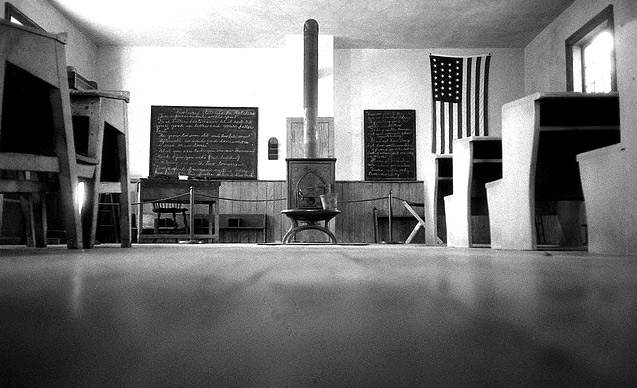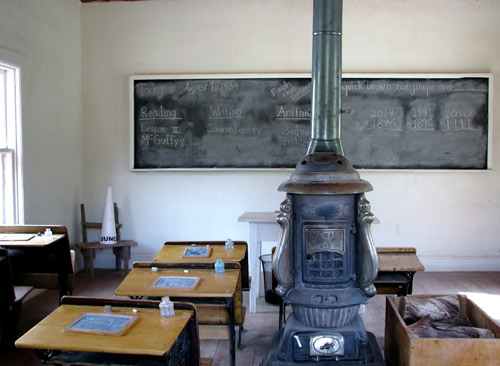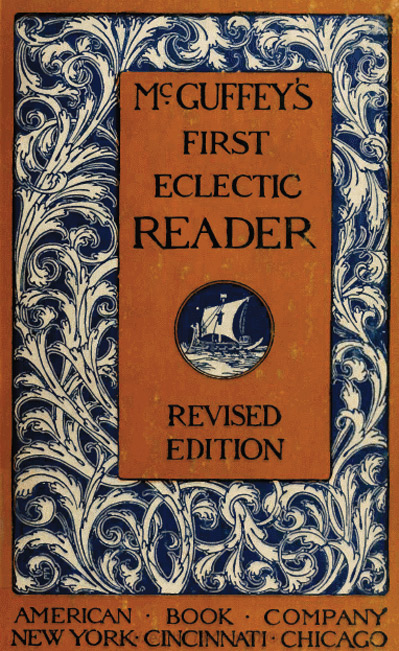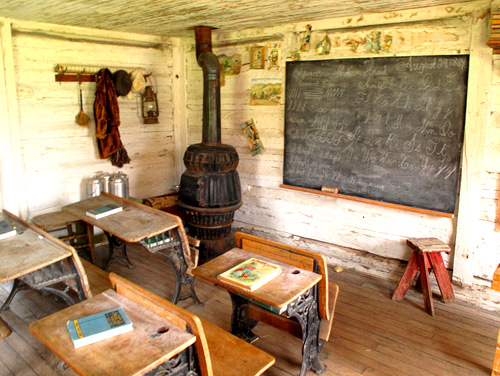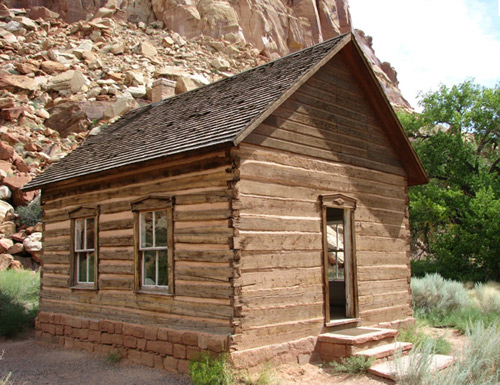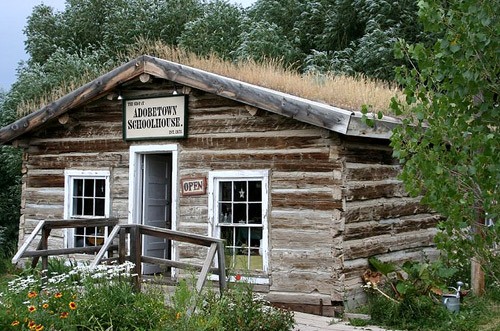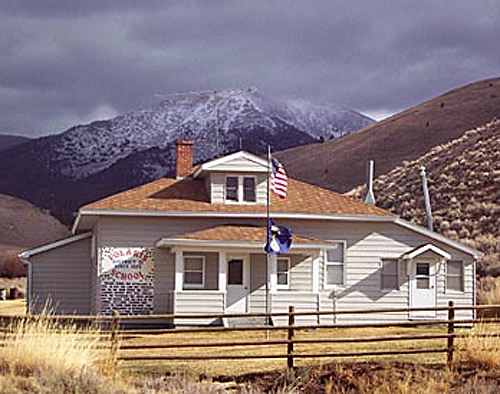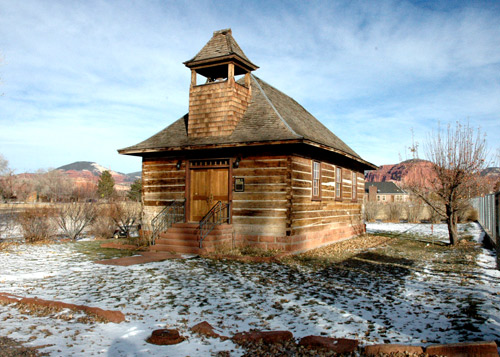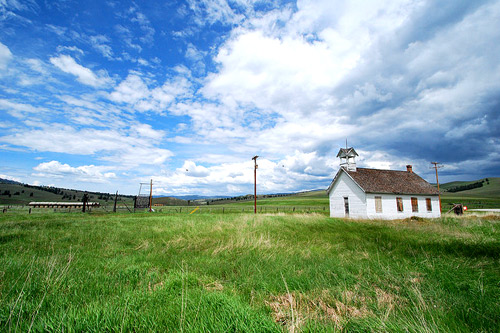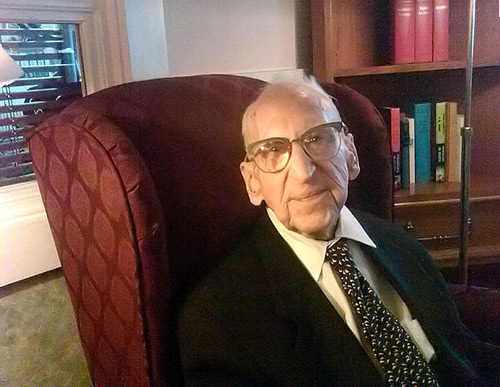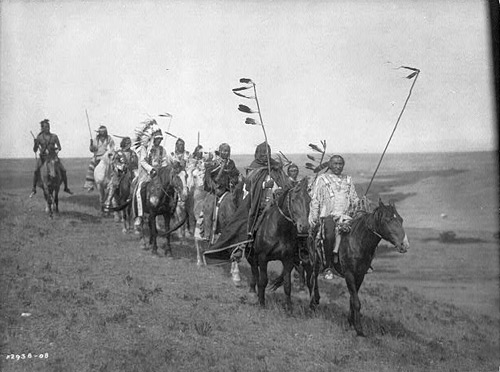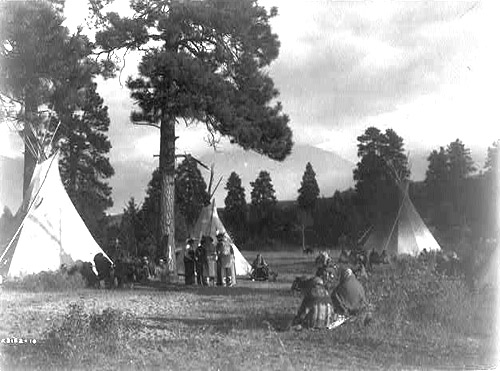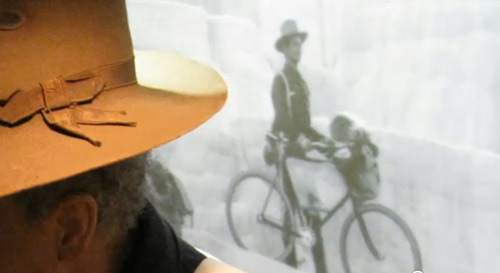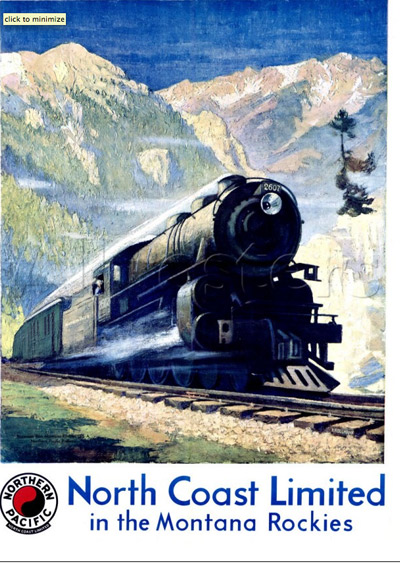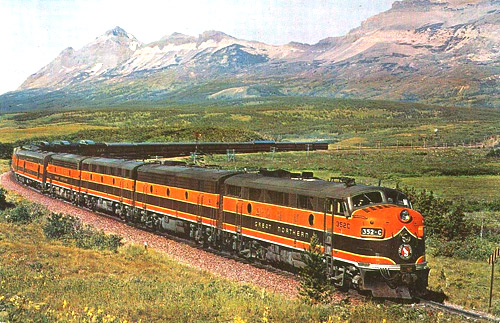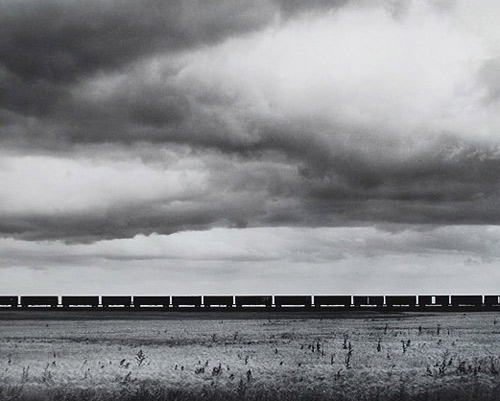The Ride of Her Life - Fanny Sperry Steele
 Tuesday, October 25, 2011 at 9:03PM Tweet
Tuesday, October 25, 2011 at 9:03PM Tweet By Bennett Owen
If there are no horses in heaven, I don’t want to go there. -- Fanny Sperry Steele
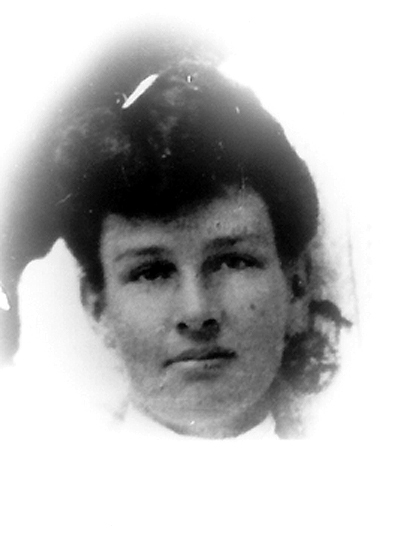 Credit: Cowgirl.net
Credit: Cowgirl.net
She was a stunning beauty with long braided hair, a warm and engaging personality…and an iron will…make that Steele. And when that fanny sat in the saddle, it was by God gonna’ stay put. By age 25 Fanny Sperry had already made a name for herself throughout the west but it was her performance at the inaugural Calgary Stampede in 1912 that cemented her standing as a western legend, riding ‘Red Wing,’ a hellacious bucking bronc that had stomped a cowboy to death just four days earlier.
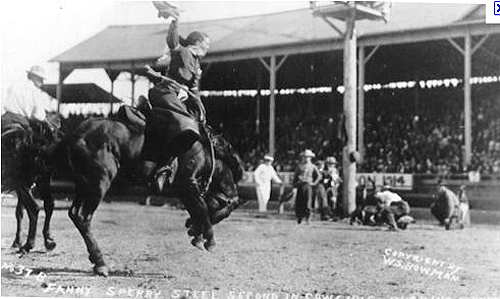 Credit: geocaching
Credit: geocaching
Here’s a description of the ride, courtesy WILD WEST Magazine:
Red Wing came straight out of the chute standing on his hind legs. He bucked…hard! He sidestepped, circled, head down, head up. The crowd exploded as they watched Sperry's waist-long black braid flounce up and down to the rhythm of the horse under her. She heard the 10-second whistle blow and jumped to the ground. She knew this magnificent sorrel had given her the ride of her life. 'GIVE THE LITTLE LADY A NIIICE HAND!' said the announcer.
A hand and a $1,000 dollar paycheck, a custom saddle and a gold belt buckle. In all, a pretty decent payday considering that ride lives on as one of the best in rodeo history.
Fanny Sperry was born in 1887 at the base of Sleeping Giant Mountain near Helena, Montana. Her mother, Rachel, taught all five children to “ride as soon as they could walk” and as a child, Fanny and her brother made sport of rounding up the wild pintos in the surrounding foothills and then riding the roughest ones. By age 15 she was performing in ‘Horse Shows,’ the precursor to the rodeo.
In 1913 she met and married Bill Steele, a champion rider and rodeo clown and they spent their honeymoon…rodeo-ing, with Sperry Steele riding as many as 14 broncs in a single weekend and earning a reputation of ‘gluing herself to the saddle.’
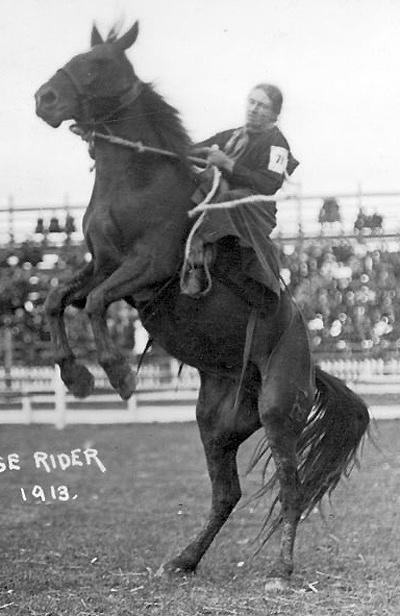 Credit: National Cowboy Museum
Credit: National Cowboy Museum
The young couple started up a Wild West show, touring with Buffalo Bill Cody.
 Credit: PatchesWorld.org
Credit: PatchesWorld.org
In addition to her horse and bull riding skills, Sperry Steele was a steel-eyed marksman who would shoot the ashes from her husband’s cigar.
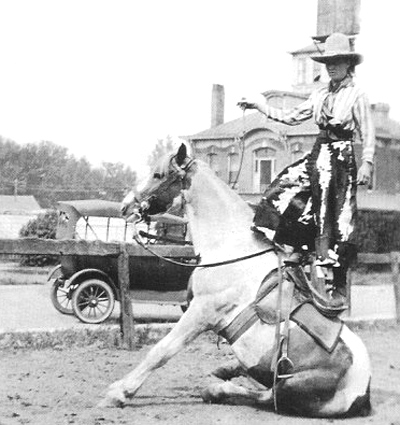 Credit: PatchesWorld.org
Credit: PatchesWorld.org
She also became a fashion icon for her ‘divided’ skirts with a front panel that allowed her to ride astride and keep a ladylike appearance…always a consideration, especially when ‘sticking to the saddle like a cocklebur’ atop the infamous “Midnight” in Madison Square Garden.
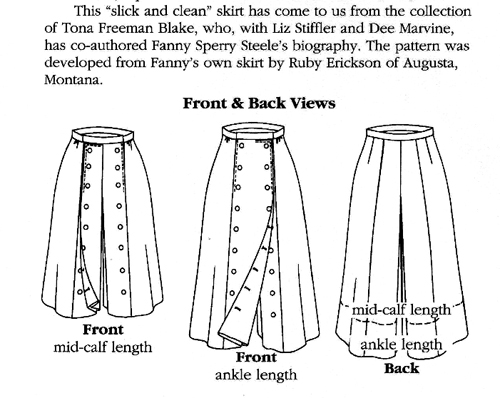 Credit: BirchStreetClothing.com
Credit: BirchStreetClothing.com
The Steeles eventually went into ranching near Lincoln, Montana.
Widowed by 1940 she kept the ranch by herself for nearly 30 years, breaking horses, and saddle guiding hunters into rough country. In 1975 at nearly 90 years of age Fanny Sperry Steele became one of the first three women inducted into the Rodeo Hall of Fame. And as she edged toward the century mark, Steele summed up her life thusly: “…to the cowboys I used to know, to the bronc busters that rode beside me, to the horses beneath me, I take off my hat. I wouldn’t have missed one minute of it.” Now that’s one heck of a ride.

